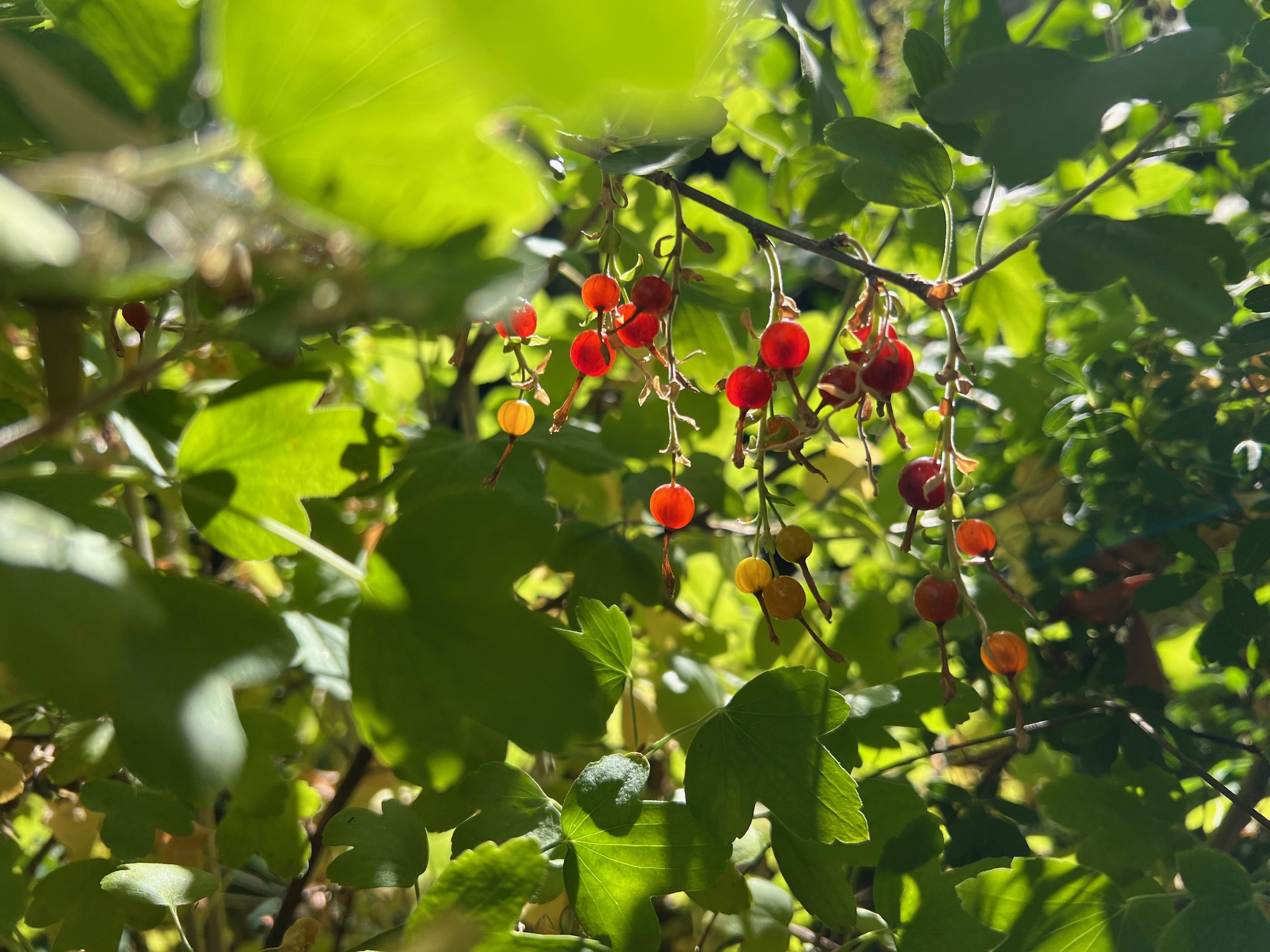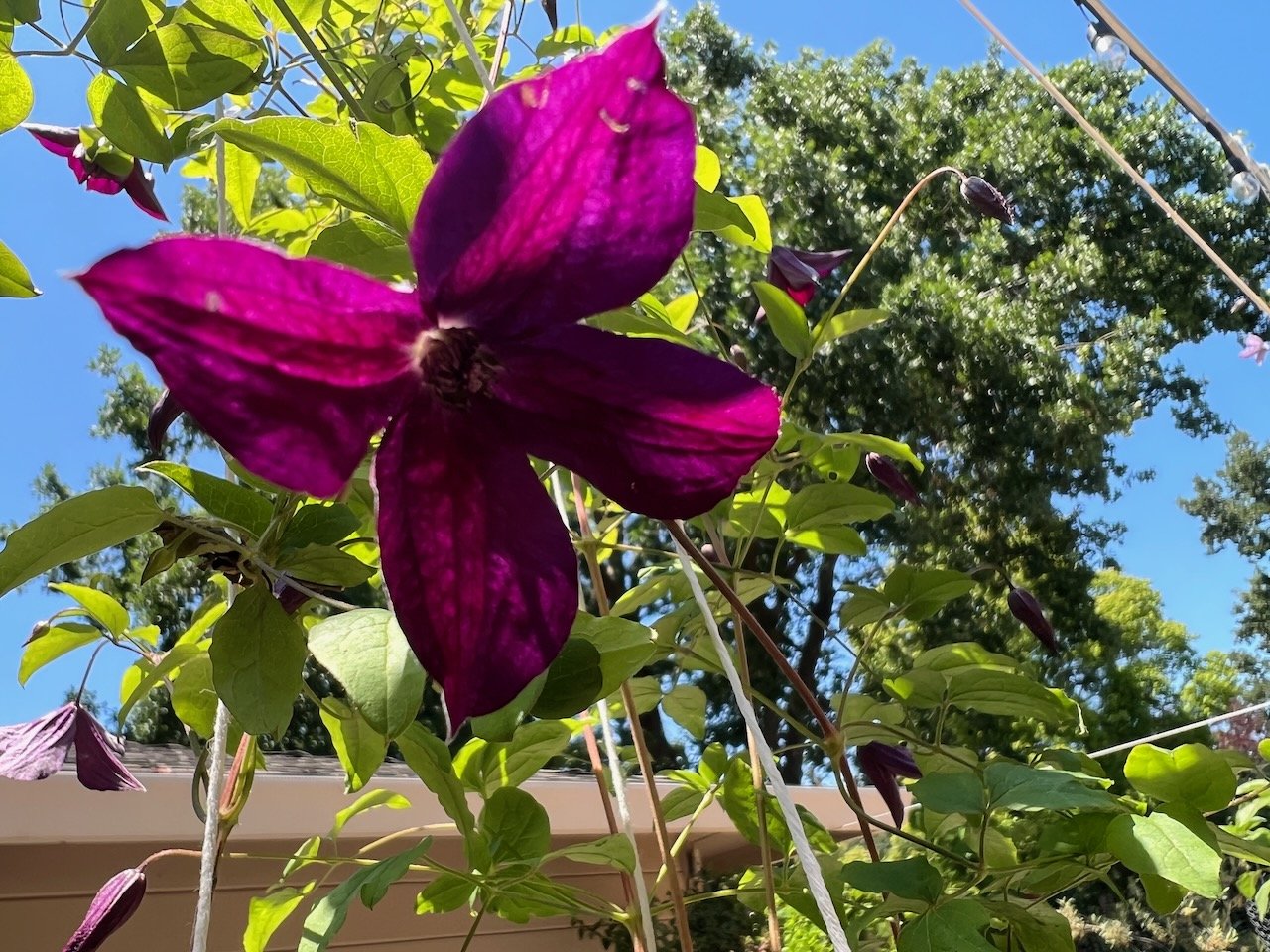What kind of person are you? Do you tend towards ‘type A,’ fully in control at all times, planning and organizing and keeping everything running correctly? Or are you rather laissez-faire, letting it all slide, ok with chaos, cool as a cucumber while the world spins around you? Maybe you’re somewhere in between, like I imagine most of us are.
Now, what kind of gardener are you? Do you like a perfect lawn, clipped hedges, formal plantings? Or are you more a meadow sort of person, with tall grasses and native annuals waving in the breeze? Do you like plantings where each plant is individual and spaced far from others, or do you prefer everything crowded together higgledy-piggledy?
Eryngium or Sea Holly, much loved by pollinators of all kinds
I think you already know what kind of gardener I am. I often say I’m a ‘messy’ gardener, and that’s true, but it’s not because I’m lazy (well, most of the time anyway), it’s because there are real scientific benefits to planting this way. It’s a conscious choice on my part; I do it to increase the resilience of my personal home ecosystem. And I do this even more deliberately because I live in an urban area; we are three-quarters of a mile from a major freeway that is often bumper-to-bumper traffic, and one and a half miles from a crowded suburban city center. Our neighborhood has homes on nice-sized lots, about 7000 square feet or so, but most of the homes here have been expanded from the 1940’s cottages they were planned to be and every family seems to have a car for each driver. Our street is jam-packed with cars, power lines, and concrete. I assume most of us live in the same kind of neighborhood.
Not everyone nearby appreciates my style of gardening, because it can look unplanned and chaotic. I often watch the reactions of passers-by, and they seem to be in two camps: One group looks confused, and tends to pass quickly, while the other group often stops short, looks around, then really looks, then finds something hidden or discreet, a secret bloom or bee, and ends up standing there transfixed for several minutes. Then they move about a foot along and repeat the whole process. Those are my people.
So why am I deliberately choosing to plant this way? What are the scientifically proven benefits of a messy garden?
First, and perhaps most obvious, is that layers of diverse plants, both vegetative and flowering, provide habitat for wildlife. I’m sure you’ve read about the decline in insects in our modern age; this is quite serious, because insects are near the bottom of the trophic pyramid. They provide food, directly or indirectly, for almost every species above them in that pyramid. If insects crash, everything crashes - insects are integral to every terrestrial food web (Goulson, 2019). But insects are not the only things declining; terrestrial vertebrate populations have decreased by one third, half of all amphibians are imperiled, and bird numbers across North America have fallen by almost 3 billion since 1970 (Wagner, et al., 2021). We can make a difference by increasing habitat for insects in our gardens, by planting a great variety of flowering plants and green leafy things, by planting in layers from the tallest oak to the tiniest groundcover, by crowding the space so that there is protection and safety.
As these flowers senesce and become seed, they provide food for the birds. As the leaves fall and collect on the ground, they become food for the soil organisms, who turn it into nutrients for our plants. Leaf litter is also biologically rich, providing pockets for the smallest creatures in which to hide and live. And this deep mulch layer conserves water, keeping it in the ground where we need it most, especially in California.
This multi-layered planting also shades the ground beneath, creating microclimates of humidity and coolness, which in turn allow the plants to thrive, particularly in dry climates where humidity is hard to come by. And if you have enough tall layers, this provides shade for the humans who also like to be in the garden. If a garden is planned well, deciduous trees can provide shade in hot months and allow sun to come through in the cold months. This can help us with our home energy bills, too, allowing us to use less AC in the summer and less heat in the winter.
And all of the concrete around us - the roads, the driveways, the sidewalks - absorb heat during the day and create an urban heat island, and compound rising temperatures due to climate change. A densely planted green space can help reduce the effect of urban heat islands, especially if everyone in the neighborhood participates in this kind of gardening. No one wants to go outside and walk, or play, in an exposed location, subject to the glaring heat of the sun. Let’s shade the sidewalks for our neighbors.
Another exciting benefit of dense planting is that plants can filter 27% of pollution drifting in from nearby roads and freeways (Arenschield, 2019). Here at Poppy Corners, our prevailing wind comes from the west and the Bay, over the Berkeley hills and sweeping up the valley to us in Walnut Creek, passing over two major freeways. All of that pollution blows towards us and gets stuck in the valley under Mount Diablo, where our home is. Knowing that our dense planting can help mitigate that drift is very satisfying.
Studies also show that when vegetation intensity is increased from mild to moderate, city noise can be reduced by up to 50% (Ow & Ghosh, 2017).
And finally, consider how you want your garden to feel when you’re out in it, lounging and relaxing. What feels good? Nothing delights me more than lying in the hammock under the tall Chinese pistache trees, watching the finely-cut leaves dance in the wind, creating dappled sunlight on my face, allowing me to feel warm and protected at the same time. I hear the fountain gurgling, I hear the birds bathing and chattering, I hear the bees in the nearby blooms. I feel like I’m in a private, secluded space, even though the street is only 12 yards away and our next-door neighbor’s back door a mere 6 feet away. It’s like my own secret jungle.
So I encourage you to think about how densely your garden is planted. I know we’ve heard a whole bunch of hooey, our whole lives, about how plants compete and they shouldn’t be grown closely together. But that’s just not the case. Plants like to share resources, connected by vast underground fungal threads. They like being messy and chaotic. They like being left to their own devices. Allow yourself to disconnect from the idea of a tidy garden, and allow the jungle to thrive.























